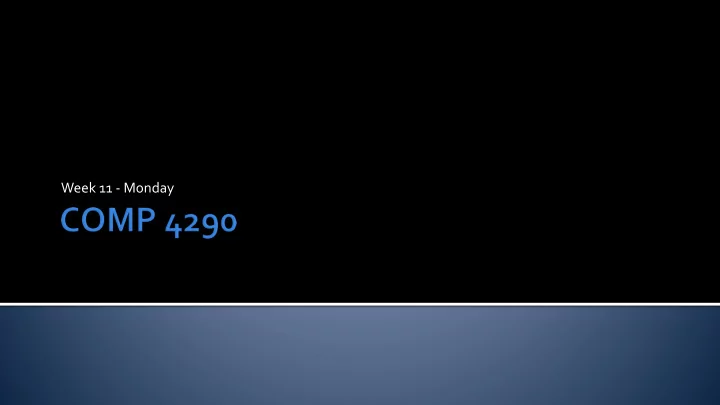

Week 11 - Monday
What did we talk about last time? Project 2 work day Before that: environment mapping Blinn and Newell's method Sphere mapping Cubic environmental mapping Environment mapping in MonoGame
The reflectance equation we have been studying is: ∫ = ⊗ L ( p , v ) f ( l , v ) L ( p , l ) cos θ d ω o i i i Ω The full rendering equation is: ∫ = ⊗ − L ( p , v ) f ( l , v ) L ( r ( p , l ), l ) cos θ d ω o o i i Ω The difference is the L o ( r ( p , l ),- l ) term which means that the incoming light to our point is the outgoing light from some other point Unfortunately, this is all recursive (and can go on nearly forever)
Real-time rendering uses local (non-recursive) lighting whenever possible Global illumination causes all of our problems (unbounded object-object interaction) Transparency Reflections Shadows
We can describe a path that light L makes to the eye E using the following notation Operator Description Example Explanation Zero or more specular S * * Zero or more bounces One or more diffuse D + + One or more bounces Zero or one specular S ? ? Zero or one bounces Either a diffuse or two D | SS | Either/or specular bounces Zero or more of diffuse or ( D | S )* () Group specular
Shadow terminology: Occluder: object that blocks the light Receiver: object the shadow is cast onto Point lights cast hard shadows (regions are completely shadows or not) Area lights cast soft shadows Umbra is the fully shadowed part Penumbra is the partially shadowed part
A planar shadow occurs when an object casts a shadow on a flat surface Projection shadows are a technique for making planar shadows: Render the object normally Project the entire object onto the surface Render the object a second time with all its polygons set to black The book gives the projection matrix for arbitrary planes
We need to bias (offset) the plane just a little bit Otherwise, we get z fighting and the shadows can be below the surface Shadows can be draw larger than the plane The stencil buffer can be used to fix this Only opaque shadows work Partially transparent shadows will make some parts too dark Z -buffer and stencil buffer tricks can Hard to see example from Shogo: MAD help with this too
Another fix for projection shadows is rendering them to a texture, then rendering the texture Effects like blurring the texture can soften shadow If the light source is between the occluder and the receiver, an antishadow is generated
True soft shadows occur due to area lights We can simulate area lights with a number of point lights For each point light, we draw a shadow in an accumulation buffer We use the accumulation buffer as a texture drawn on the surface Alternatively, we can move the receiver up and down slightly and average those results Both methods can require many passes to get good results
You can also blur based on the amount of distance from the occluder to the receiver It doesn't always look right if the occluder touches the receiver Haines's method is to paint the silhouette of the hard shadow with gradients The width is proportional to the height of the silhouette edge casting the shadow
All you need is the appropriate matrix to flatten all the geometry of your model onto a plane Matrix shadow = Matrix.CreateShadow(Vector3.UnitY, new Plane(Vector3.UnitY, 100)); In this case, the shadow is cast from a light vector that's in positive y onto a plane with a normal that's also positive y , 100 units below the origin All that's needed is to update the world matrix: world = world * shadow Then draw the model with lighting off and a black color
More on shadows Shadow volumes Shadow mapping Ambient occlusion
Start Assignment 4 Start Project 3 Keep reading Chapter 9
Recommend
More recommend